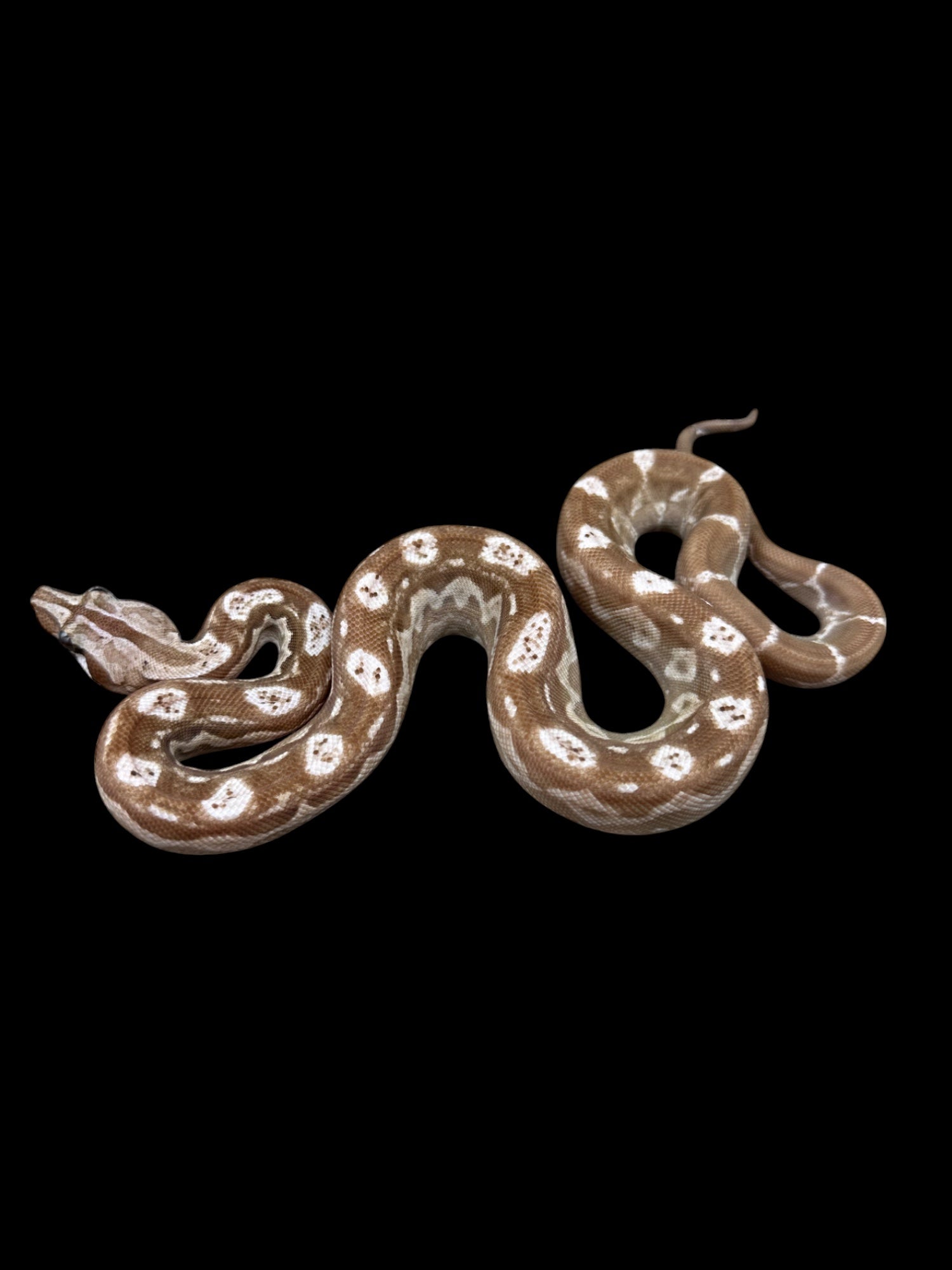Photo Disclaimer
Description
Boa Constrictor Imperator (BCI)
Boa constrictor imperator
Morph/Lineage: Motley T+ Snow (Chocolate T+ Albino × Black Eyed Anery, Nicaraguan Locality)
Species Overview
-
Size: Boa constrictor imperator typically grow 6–8 feet (1.8–2.4 m), though Nicaraguan localities remain smaller, averaging 4–6 feet (1.2–1.8 m). They are stockier and more compact than Colombian lines.
-
Appearance: This boa expresses Motley, Chocolate T+ Albino, and Black Eyed Anery traits. Motley (co-dominant) alters the dorsal pattern into connected saddles, striping, or reduced markings. Chocolate T+ Albino (recessive, expressed) produces warm caramel, golden, and brown tones with reduced melanin. Black Eyed Anery (recessive, expressed) removes red pigment while giving the snake its distinctive black eyes. The Nicaraguan lineage contributes a smaller adult size, bold contrast, and darker overall tones, enhancing the visual impact of this morph.
-
Distribution: The natural Boa constrictor imperator is found across Central and South America, with Nicaragua known for producing compact, high-contrast locality boas.
-
Habitat: Wild Nicaraguan boas inhabit tropical forests, scrublands, and riverside areas, often in environments with seasonal humidity changes.
-
Behaviour: Nocturnal ambush predators feeding on small mammals, birds, and reptiles. Juveniles are more arboreal and may climb frequently, while adults are primarily terrestrial.
Captive Care
-
Enclosure: A naturalistic enclosure is recommended. Due to their smaller size, Nicaraguan boas do well in 4′ × 2′ × 2′ setups as adults, though larger spaces are beneficial. Provide secure hides, cork bark, climbing branches, and foliage. Bioactive setups with soil substrate, live plants, and leaf litter help stabilize humidity and provide enrichment.
-
Temperature & Humidity: Maintain a gradient of 80–85°F (27–29°C), with a basking zone of 88–92°F (31–33°C). Nighttime drops to 75–78°F (24–26°C) are acceptable. Humidity should remain 55–70%, with access to fresh water for soaking.
-
Diet: Juveniles feed every 7–10 days on small rodents; adults every 14–21 days. Portion prey carefully, as Nicaraguans are more prone to obesity than larger Colombian boas.
-
Behaviour in Captivity: Hardy boas that typically adapt well to captivity. They may show strong feeding responses but generally tolerate handling once established.
-
Special Considerations: While selective breeding has produced a wide variety of morphs, their core care requirements remain identical to standard Boa constrictor imperator.
Genetics/Lineage Note
The Motley T+ Snow – Chocolate T+ / Black Eyed Anery (Nicaraguan) involves:
-
Motley (co-dominant, expressed): Produces connected saddles, dorsal striping, or reduced patterns.
-
⚠️ Note: The homozygous form (“Super Motley”) is generally considered fatal in boas and does not produce viable offspring.
-
-
Chocolate T+ Albino (recessive, expressed): Produces caramel, golden, and brown tones with reduced melanin.
-
Black Eyed Anery (recessive, expressed): Removes red pigmentation and produces solid black eyes.
-
Nicaraguan Locality: Smaller adult size (4–6 feet), compact build, bold contrast, and darker tones compared to Colombian BCIs.

